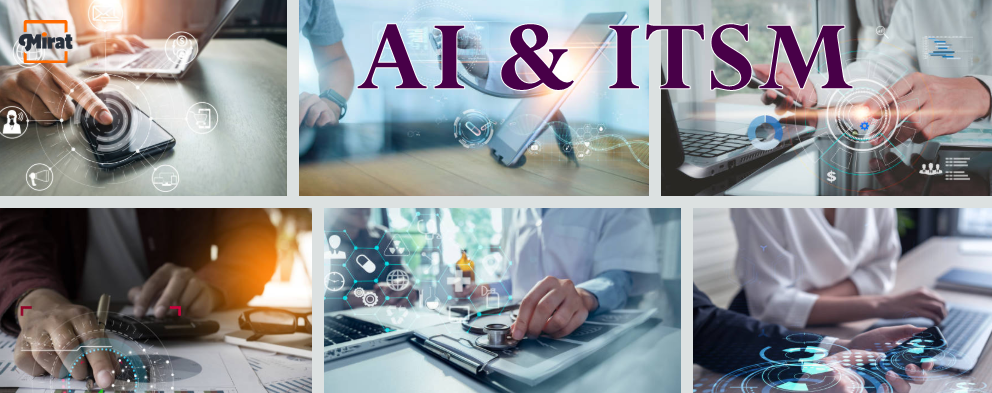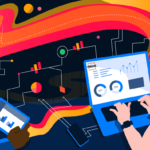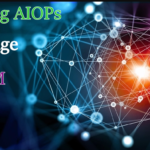As a result of its ability to learn, AI is a system that is able to respond to situations that its developers could not have imagined.
IT Service Management (ITSM) groups will be tasked with keeping our government and corporate networks up and running as artificial intelligence (AI) becomes more commonplace.
Using AI gives businesses the chance to improve the customer experience at every point of contact, but without human oversight, the opportunity will be wasted.”
AI will not be a success if humans do not govern it at the outset. In the future, we may no longer need human government because of advances in AI technology, but that’s a topic story for another time.
AI will have a significant impact on three aspects of ITSM offerings:
- Incident management/Request Creation
- Automated Backend Processes
- Point of Entry
Before we get into these three sectors, let’s look at how AI will affect some of the IT technology we already use.
The use of artificial intelligence in IT service management
First, the point of entry (incident/request creation) must be established.
When information is inserted into an IT service management system, artificial intelligence will guarantee that it is understood correctly before it is entered.
Chatbots powered by artificial intelligence will play critical roles in interactions with customers, within the organization, and in business-to-business situations, according to a 2017 AI research.
Automated IT service management frameworks are built when the details available is accurate.
If the information is inaccurate, AI doesn’t perform. Simple right!
A self-service platform is designed for submitting requests and reporting occurrences. This backend process was defined by the web form that the end-users had to fill out, which inquired whether they were submitting a request or asking for assistance.
As a result, many requests turned out to be events, whereas many incidents were requested. Requests and incidents were frequently delayed or lost, and the finished experience was significantly affected. This is now a concern of problem management.
IT service management firms will be reluctant to eliminate front-line human analysts as long as these issues persist. Fears of time and money spent rectifying errors caused by a misunderstanding from an imperfect system are the main reason for this, as opposed to providing direct customer Service Request Management.
Chatbots that use artificial intelligence (AI) will be able to analyze situations and requests appropriately. Our end-user experience and service management solution will both benefit from the maturation of this technology.
Backend processes that can be automated
The backend procedures of IT service management are designed to handle any issue or request processed by the system. There are many ways to submit a request or a problem to the system, including a self-service directory. A request or an incident can be opened with no human intervention if the ITSM solution is linked with other network platforms.
IoT devices such as smart light bulbs/switches can be managed by a facility management solution that includes an ITSM solution.
If the ITSM Tool Suite interfaces with the facilities management solution, it will file a support request like replacing a switch, battery, or lightbulb without any human participation.
The convergence of software and services to develop a next-generation product portfolio with AI platforms will be the next great move. Service of the future an “intelligent automation” service is described as one or more AI technologies (e.g., a cognitive-computing platform) used as the cornerstone of an offering’s key value proposition.
IT asset management and solutions will immediately fix problems in the future by integrating with other IT systems on the network. There will be no need for human interference.
Knowledge Management is the third pillar of this strategy.
AI-powered IT service management (ITSM) solutions could then turn to knowledge databases for responses. The cloud will allow them to access trusted knowledge sites if they are not present.
There will be no limit to the amount of data that can be mined by end-users and analysts using AI-powered ITSM systems, which can be documented in knowledge databases that humans can use.
It has been shown that “deep learning” architectures may give results that are on par with or even better than those of human specialists in disciplines including computer vision and speech recognition as well as natural language processing, audio recognition, and social network filtering.
AI-powered knowledge solutions will revolutionize the way people seek assistance. They’ll be able to offer you an accurate answer to any query you ask in a matter of seconds. In today’s society, “immediate pleasure” is the standard, and right now, we want to know the answer.
For example, to improve our mood, we ask Siri or Alexa to play our favourite song-a a song we might have played too many times before. This is AI. Now imagine it at workplaces or IT. You want a quick look at recent survey results. Instead of calling on a subordinate, you choose AI for a quick resolution. Data at your fingertips.
In the future, ITSM knowledge solutions will be able to provide more than just answers to our IT questions; they will also be able to provide training and advice for both end-users and analysts.
Most of the information that an ITSM solution provides will likely come from documents written by human analysts, which are frequently out-of-date or irrelevant to the current issue. ITSM knowledge solutions will need human input until AI is completed in the next few decades.
Self-service portals and AI-powered chatbots will eventually replace human ITSM analysts. Major incidents (one-to-many), problems, and changes will focus on human ITSM analysts in the future. For any ITIL process, the amount of human engagement will continue to decline. We should expect IT, analysts to shift their focus away from technology and toward business goals in the years to come.
AI in IT service management tools can be used by integrating it with other network technologies. For example, It is feasible to alert your ITSM solution to prospective network issues by combining it with a system that provides IT Operations Analytics (ITOA).
AI-powered ITSM solutions will be capable of learning as they update their knowledge databases, boosting their ability to respond to any situation. In other terms, AI will be able to learn from its own past experiences.
FAQs
Why do Businesses choose MIRAT FOR ITSM?
Since its launch, the product has been used by more than 800 clients across 35 countries and has significantly reduced operational expenses and improved team productivity and efficiencies. With close to 85% annual retention rates, MIRAT has been a revolutionary ITSM product, which has helped boost our valuable clients’ IT infrastructure management. As expert says ITSM is a must-have Tool for all Companies
The on-premises MIRAT product also has a Net Promoter Score (NPS) of 81 and is one of the top-rated products on several comparison portals.
In our endeavour to constantly improve the product and ensure our clients get a best-in-class product, the company has conducted extensive R&D in the past two years and has launched a cloud-based, AI version of MIRAT!
If ITSM is integrated with all of the network’s systems, it will see bigger trends, providing reliable stats. For example, an IT security solution is also incorporated when an ITOA solution is combined with an ITSM system. As soon as the ITOA solution noticed an increase in browser failures on end-user devices, it would transmit this knowledge back to the ITSM solutions.
Does MIRAT have AI?
Mirat.ai, a revolutionary artificial intelligence backed ITSM module that offers startups, enterprises and medium businesses the opportunity to invest in an affordable and modern tool to track their workflows. Its 14-day free trial version is available on the Mirat.ai website.
That exception might be investigated using the ITSM solution and cross-referenced with IT security data to uncover any patterns which might explain it. Insight forecasts about how all the problems will proceed and ideas on how they can be fixed can be provided whenever the ITSM solutions register the “trouble.”
Is MIRAT an ITSM tool?
Yes, MIRAT.ai is an ITSM tool. Enterprise firms may enhance operational efficiency by streamlining and automating common operations with MIRAT.ai, a cloud-based workflow automation platform.
Mirat.ai’s IT Infrastructure Management is Affordable & Easy to use! Get your Dashboard ready in only 5 Minutes. Request for Trial/Demo now (or) Contact our Team Now .
Contact Information:
Hema
Sales Executive
Phone: +1-315-636-4213
Email: sales@mirat.ai
Website: https://www.mirat.ai/


